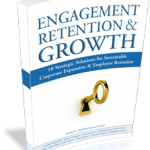 What are the top persuasive words to use during team meetings? According to a data-driven study there are some good ones.
What are the top persuasive words to use during team meetings? According to a data-driven study there are some good ones.
Every day, an estimated 11 million meetings take place in the United States alone. With managers often spending three-quarters of their time in meetings – and 97% of workers reporting that collaboration is essential to do their best work – many companies are looking for ways to make meetings more productive. According to MIT Sloan School of Management Prof. Cynthia Rudin and MIT PhD student Been Kim, findings from a new data-driven analysis of meetings can help managers be more persuasive and efficient.
“Often when key decisions are being made, there are not too many proposals still on the table, and people are mainly receiving or asking for information”
“The study of meetings is important yet challenging because it requires an understanding of many social signals and complex interpersonal dynamics,” says Rudin. “While there has been a lot of academic work done on meetings, our research is unique in that it is one of the first studies to use a data-driven approach to meeting analysis.”
Applying machine learning techniques to analyze a very large amount of meeting data, Rudin and Kim addressed whether it’s possible to predict if a proposal will be accepted based on the persuasive words used. Rudin explains, “There are many published lists of persuasive words, but they weren’t created from a data-driven perspective. We wanted to prove which words are more persuasive using predictive modeling and hypothesis tests.”
Using statistics, Rudin and Kim found that the use of specific words in proposals significantly increased the chances of acceptance. They found that some of the top words most likely to result in accepted proposals were: yeah, give, start, meeting and discuss.
“Often when key decisions are being made, there are not too many proposals still on the table, and people are mainly receiving or asking for information,” observes Rudin, who notes that their algorithms obtained 92% accuracy in detecting the time frame when decisions will be made.
The word ‘yeah’ seems surprising at first as a persuasive word, but, says Rudin, “when we looked at the way people were using it, we found they were using it to show agreement with something that someone else previously said. Perhaps if you frame a suggestion as if it were in agreement with others, it’s more likely to be accepted.”
Some of the other words also were unexpected, she notes. “The word ‘meeting’ is used in suggestions about what not to discuss. For instance, someone might say, ‘Maybe this is something for the next meeting,’ as a way of gently moving the topic onward without causing offense. That suggestion was almost always accepted.”
Further analyzing the language used in meetings, Rudin and Kim found that it’s possible to predict when key decisions are being made based on dialogue. The predictors, explains Rudin, are a combination of communications such as information being provided or requested, suggestions, acceptances, or rejections, among others.
“This would be useful when listening to a previously recorded meeting and you want to fast forward to the key decision. Or, it might help managers be more efficient if they could be automatically alerted to join a meeting when a decision is about to be made,” she says.
Rudin and Kim also tried to determine whether there was a “quintessential” pattern of dialogue that happens during a meeting. They looked specifically at the patterns of how social acts (which include phrases like, “Brilliantly done!”) interact with assessments (which include phrases such as, “No, a wheel is better.”).
They found that positive social acts are almost never directly stated before or after a negative assessment. “This is a bit counter intuitive because it would seem natural to complement someone to make up for something negative you said about their idea,” says Rudin. “However, that almost never happens.”
Instead, if someone compliments another participant just before or after they assess an idea negatively, she explains, their compliment could sound disingenuous. “For instance, you’d almost never hear ‘It’d be annoying’ back to back with ‘Yeah, it was a pleasure working with you.’”
Rudin adds, “This is one of the first data-driven works in the scientific field of meeting analysis and while we’ve made – and found tentative support for – several hypotheses, there is much more work to be done in this arena. We’re just at the beginning of finding ways to use machine learning to produce tools for more efficient meetings. Since everyone wants their ideas accepted, it’s worth considering word choice in proposals. You don’t want to undermine your idea by not using the right language.”
Rudin and Kim’s work on this topic was recently featured by the Association for the Advancement of Artificial Intelligence. For more information on Prof. Rudin, please visit: https://mitsloan.mit.edu/faculty/detail.php?in_spseqno=41126.
To read Rudin and Kim’s research paper, “Learning about Meetings,” please visit: http://arxiv.org/pdf/1306.1927v1.pdf.
Copyright TIGERS Success Series by Dianne Crampton
Want solutions to building a thriving post-recession business?
For clear insight into achieving growth and profitability in the workplace — straight from 10 top experts in their industry— go to: Engagement, Retention & Growth to review current best practices in meeting management, engaging employees to champion change to onboarding new employees.
One solution will not address your unique initiatives, but a combination might make more sense to your complex systems. For this reason, TIGERS Success Series presents viable solutions from diverse perspectives in change management, marketing, training, team development, executive recruitment, employee retention, and sales. Each solution is offered in a 30-minute comprehensive recording from experts in their industry. We provide the best strategies to advance growth… stay ahead of the competition … adapt quickly to change … and improve your company’s bottom line. And, you are encouraged to share these recordings with your employees.

Thanks for sharing. I read many of your blog posts, cool, your blog is very good.